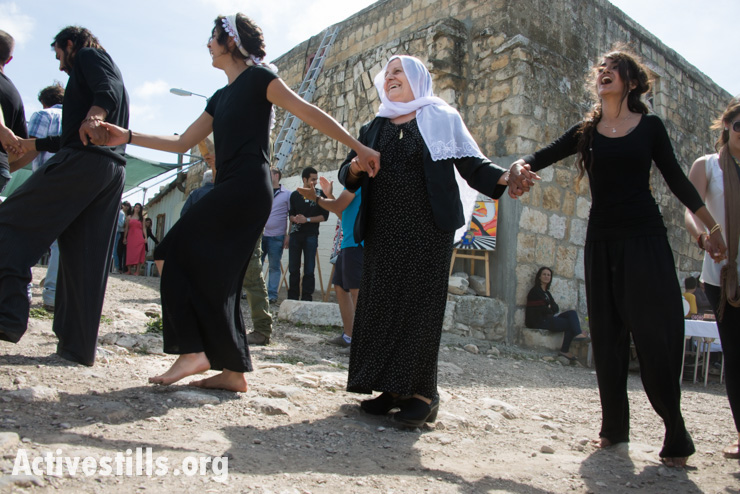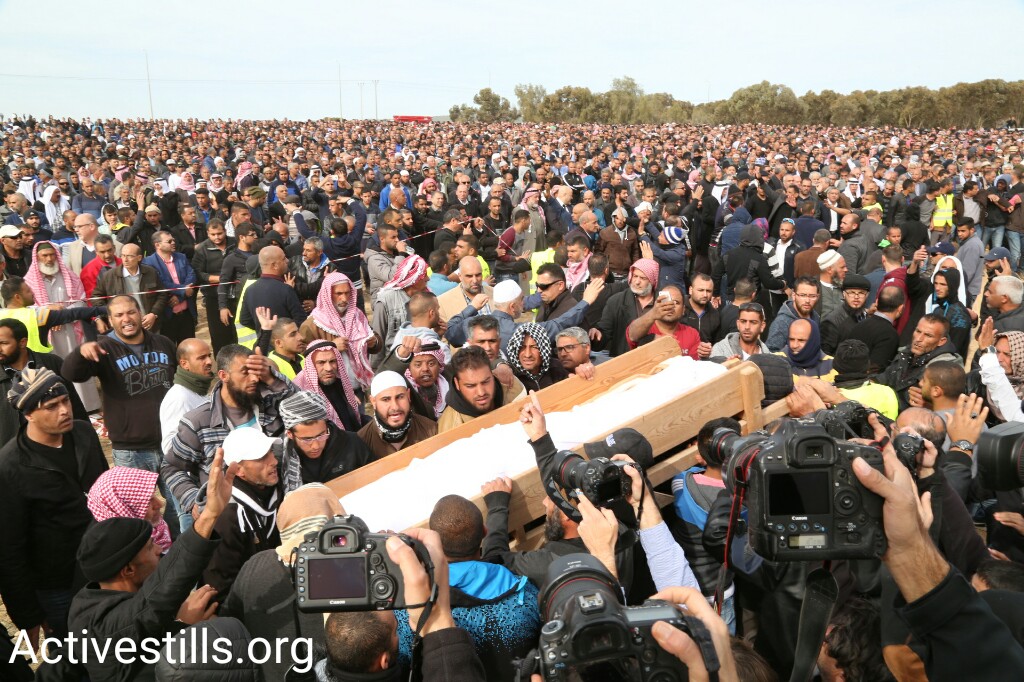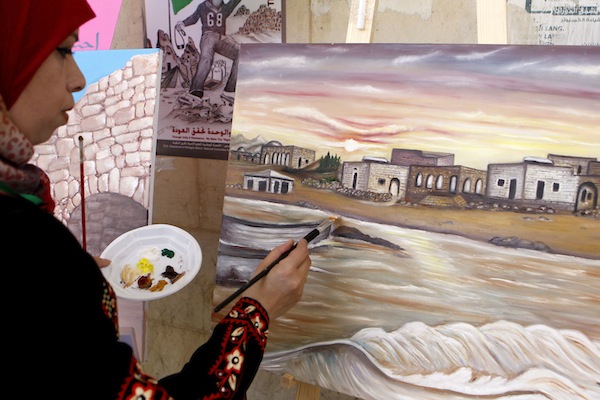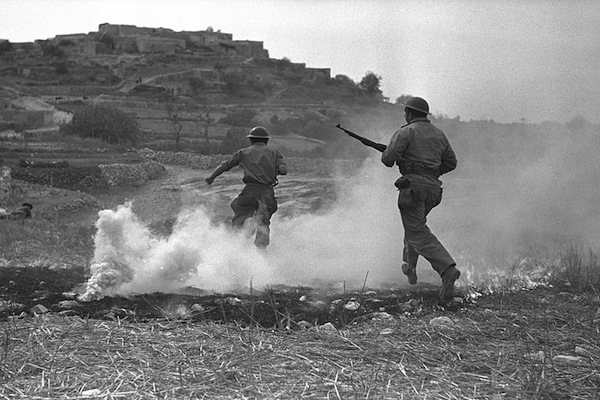A new map seeks to provide new information on the Palestinian cities, towns, and villages that were erased and replaced since the inception of the Zionist movement.
By Tom Pessah

Immigrants coming to Israel are unlikely to know the name “Mlabes,” but Israelis are more acquainted with it. After all, it is the name of a local newspaper, a young singer, a shawarma joint, and a chapter of the Israeli Scouts.
But all these have one thing in common: they are associated with the city of Petah Tikvah, northeast of Tel Aviv. According to the Petah Tikvah City Archive’s website, Mlabes was the name of a village that existed well before the establishment of the city. It appears on a map prepared for Napoleon’s invading army around 1799. There is archaeological evidence of settlement in the same spot during the Byzantine Era, as well as by the Crusaders. A famous song by iconic Israeli singer Arik Einstein mentions how the village was visited by Zionist pioneers in 1878.
There were no birds singing in this swamp, according to the song, but the pioneers persevered and founded Petah Tikva, the first Zionist “moshava” (Hebrew for “colony”). And Mlabes? The Petah Tikvah City Archive says that the landowners wanted to get rid of the place due to poor weather conditions, floods, and swamps. They sold it, says the site — and then Mlabes disappears from the narrative.
Fast forward to January 2017. Bedouin established the village of Um el-Hiran in 1956 just east of Beer Sheva, after being displaced from their original lands by the Israeli military government. Now Israel is once again trying to displace them in order to replace their village with a Jewish town. The police arrived at the village fully armed, shooting the village’s beloved math teacher, Yacoub Abu al-Qi’an, as he was reportedly attempting to rescue personal possessions from his soon-to-be demolished home. Al-Qi’an apparently lost control of the car after being shot, hitting a policeman. Both the police officer and al-Qi’an died — the latter after being denied medical treatment.

What do Mlabes in 1878 and Umm el-Hiran in 2017 have in common? Both are part of a gradual, long-term process of replacing Palestinian localities by ones designated for Jews, all within the framework of Zionism. Thanks to the activities of Israeli NGO Zochrot, which strives to raise awareness of the Nakba, Israelis are somewhat more aware today of a key part of this process that occurred during the 1948 War. Yet there is a tendency to view the Nakba as an isolated “catastrophe,” born of war, so that the long-term process of dispossession becomes obscured. Even Palestine Remembered — a website that provides details of Palestinian cities, towns, and villages that were cleansed of their Arab inhabitants — focuses almost exclusively on localities destroyed in 1948.
A new map, produced by the Israeli NGO De-Colonizer, aims to fill that gap.
The map includes several layers, each marked by different-colored points. In blue are the 57 Palestinian localities destroyed between 1878 and 1948, when Zionists bought up land and cleared it of its Palestinian tenant farmers in order to clear the way for Jewish settlers. Some of these farmers received compensation; many were driven off the land by state authorities after Zionist buyers made deals with non-local landowners. An additional group of blue sites marks the 18 Jewish localities destroyed in riots that broke out periodically in reaction to Zionist settlement, especially in 1920, 1929 and 1936. Thus, the map demonstrates that the destruction process affected Jews too, including members of pre-Zionist Jewish communities, such as the Jews of Hebron.

This layer also includes an intriguing series of arrows that mark another forgotten piece of history: the 46 non-aggression initiatives between local Jewish and Palestinian localities in 1947-1948.
These agreements were meant to protect both sides from conflict and displacement. For instance, the Shi’ite villagers of Hunin opposed the attack against their neighbors in Kibbutz Manara and refused to cooperate. The village, along with other towns and villages in the eastern Galilee, was nevertheless cleansed when Yigal Allon’s Palmach forces arrived in the area in May 1948. According to Israeli historian Benny Morris, the takeover of Hunin included massacre and rape.

Hunin’s story exemplifies the second layer in the map – the localities marked in red. These were 615 Palestinian localities destroyed between 1948 and 1952 by Zionist forces, in what came to be known as the Nakba, when most of the country’s Palestinian population of the country was driven out under the guise of war. This layer also includes 26 Jewish localities destroyed during the war by the invading Arab armies.
The localities marked in green, destroyed during the 1967 war and after, include a little known chapter of history: the 194 Syrian localities destroyed during the cleansing of the Golan Heights, days after their conquering in 1967. The resulting expulsion of 130,000 Syrians is today considered as taboo in Israel as the Nakba used to be. Few know the names of the villages whose ruins can still be seen today in the Golan.
This layer also includes 11 Palestinian villages destroyed during the war and after, as well as 54 Palestinian localities in the Jordan Valley and in the southern Hebron Hills that, according to Israeli human rights organization B’Tselem, are facing expulsion.
Another 64 Palestinian localities in the south and north of the country, including Umm el-Hiran, remain unrecognized by Israel. As a result, they do not appear on any official maps, lack basic infrastructure and utilities, and many of them are slated for destruction. De-Colonizer’s map can help us predict the future elimination of Palestinian localities.
Unlike Einstein’s song and the maps Israelis grow up with, which display the triumphant growth of Zionist settlement, De-Colonizer’s map exposes the dark side of history, the ongoing displacement of Palestinians (and Syrians) through the practice of designating land for the use of Jews only. Without significant international intervention, the map’s editors write, this is all too likely to continue.
De-Colonizer’s new map, Colonialism in destru(A)ction, is available here.
Tom Pessah is a sociologist and activist.
